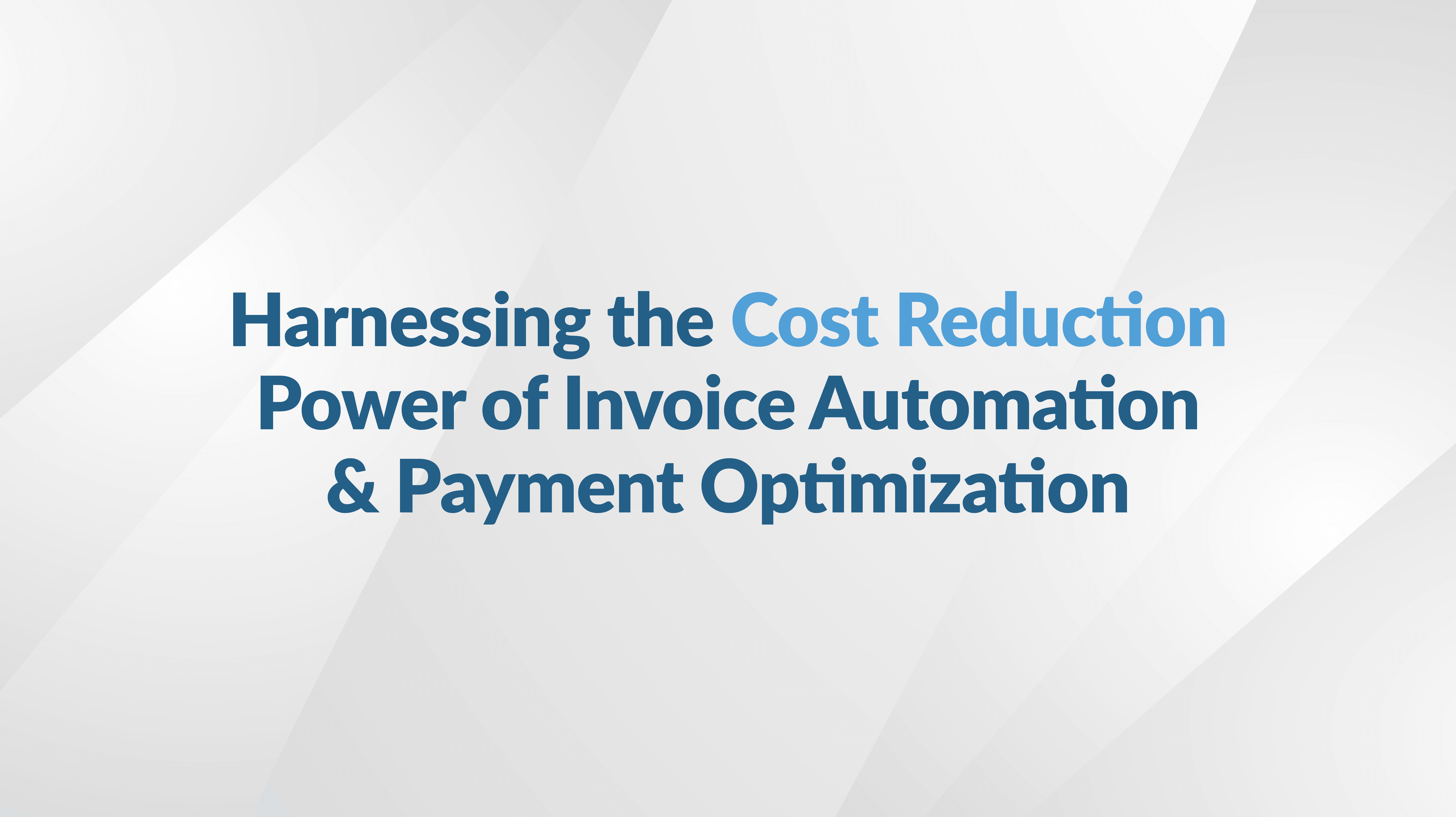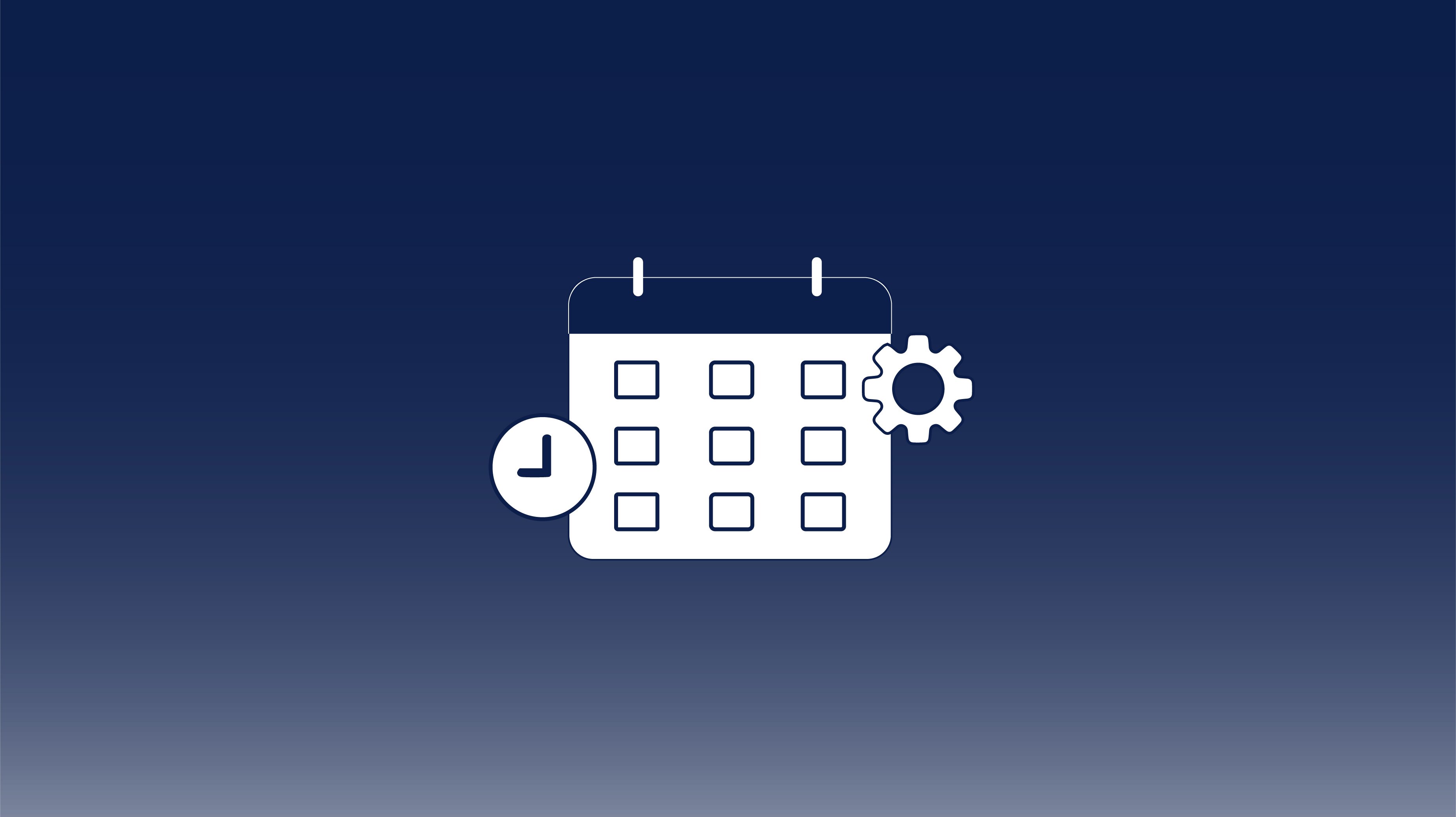Automated Accounts Receivable Programs: Cutting DSO by 30% in Six Months
In today’s economy, speed to cash is as important as speed to market. Companies that let receivables linger for 60, 75, or even 90 days are putting...
4 min read
May 3 2016
by
![]() Chris Cosgrove
Chris Cosgrove

Many pieces have been written on the virtues of automating payments from both a process and profitability standpoint. With that said, it makes sense to revisit the potential gains of this area as many organizations have yet to fully realize the benefits associated with automation. Part of this has to do with antiquated models of software deployment and long-term ROIs that many business executives can’t justify investment in. However, modern, cloud-based, transactional models afford the same automation impacts of traditional on-premises software, with a price tag that is typically a fraction of the cost.
Let’s take a look at both invoice processing and payment methodologies to uncover the costs associated with each area and where it’s possible to trim the excess.
The beginning of wisdom is the definition of terms, and for this component, the terms that need to be defined are what ‘invoice processing’ actually means. Essentially, this is the process component that encompasses invoice presentment and processing, but before actual payment occurs. To be more precise, it entails the physical receipt (whether hard copy or digital), data entry, matching and reconciliation, GL-coding, and approval processes that have to happen for an invoice to be processed to the point where it can be paid. This area represents the bulk of human labor efforts that have to occur to get an invoice prepared for payment, and as a result, typically contains the highest number of cost components from a time and effort perspective. With that said, it’s worth delving into for this reason as the gains from an improved process are numerous and sustainable.
The Average Cost to process an invoice is over $6.29 according to The Aberdeen Group. Best-in-class organizations per the same study process their invoices for $3.34 per transaction while laggards’ invoice processing costs are over $16.67 per invoice according to the same study (Invoice Automation in a Networked Economy, 2012).
In most cases, automation can improve invoice processing cycles by over 70% to completely manual processes. While certain benefits can be derived solely through the initial push for electronic archival of invoices from a storage and retrieval perspective. However, in order to juice the process for all its worth, it’s necessary to tackle several components simultaneously. For starters, data entry, which tends to be the most onerous aspect of invoice processing, needs to be fully automated (or as close to fully automated as possible) through advanced optical character recognition (OCR). This, combined with data correction (of the less than 2% of characters that OCR may be unsure of in terms of accuracy) enables AP staff to get out from underneath the drudgery that is invoice entry. Now, in harnessing the data lifted from all the data fields of the invoice, automated secondary validation can offload the task of invoice matching be it 2 or 3 ways (either against open purchase order data or receiving data, or both). This is another major time consumer in the data entry process, especially for companies who rely heavily on PO line item matching in their invoice approval processes. In most cases, nearly 80% of this effort can be streamlined as well.
Once invoice data has been captured, validated, and indexed, that data can and should be utilized to drive the process forward dynamically. For non-PO-based invoices, this data can be used to drive automated workflow and escalation processes to swiftly GL-code and assign invoices to the appropriate departmental approvers with minimal effort. This becomes a time and money-saving effort for AP staff, but more importantly can begin to eliminate mundane tasks for higher dollar value FTE’s including departmental managers and executives, freeing them up to concentrate on core duties.
Finally, integration harnessing the invoice data into the back-end ERP or accounting system needs to be in place through whatever means possible. This may include direct, API, flat file (alternatively .csv / .xls, etc.), or even automated robotic technology that writes data in mimicking human effort, but autonomously. Any of these methods free up AP staff to focus on higher-order activities and slashes manual processing efforts and their inherent costs.
Once the heavy lifting of invoice matching, approval routing, GL-coding, and data entry have been thoroughly automated, the final component to tackle lies in payment optimization and automation. Payments represent another significant area of opportunity for AP department transformation. With The Accounts Payable Network’s cost benchmark of $5.14 per check cut for the average company, it’s little wonder that savvy finance leaders are searching out ways to eliminate these nagging costs. However, given the changing landscape of payments, and specifically the advent of virtual card payment technologies, it’s not only possible to slash costs in this area, but actually monetize them to the point where AP, which is normally a cost center for most organizations (hence why it gets little investment comparative to front office areas likes Sales & Marketing) and morph it into a profit center.
Let’s look at the following sample scenario to show how much an organization can impact its costs and the financial upside it can reap:
|
ABC Corp |
|
|
Annual Revenue |
$100,000,000 |
|
Annual AP Spend |
$40,000,000 |
|
Monthly AP Spend |
$3,333,333 |
|
AVG # Invoices / Mth |
2500 |
|
Number of AP Processors |
3 |
|
AP Processor Load |
833 |
|
AVG Cost to Process Invoice |
$6.69 |
|
Monthly AP Invoice Processing Cost |
$16,725 |
|
% of spend paid via check |
100% |
|
AVG # checks / Mth |
1250 |
|
AVG Cost to Process Check |
$5.14 |
|
Monthly AP Check Processing Cost |
$6,425 |
|
Total Monthly AP Processing Cost |
$23,150 |
|
% Productivity Improvement Invoice Processing |
70% |
|
Improved AP Processor Load |
1417 |
|
Improved Staff Count |
1.8 |
|
Improved Cost to Process Invoice |
$2.01 |
|
Improved Monthly AP Invoice Processing Cost |
$5,017.50 |
|
Monthly Invoice Processing Cost Savings |
$11,708 |
|
% Improvement in Checks Cut |
30% |
|
Improved # Checks / Mth |
875 |
|
Check Processing Cost Savings |
$1,928 |
|
Total Monthly Processing Cost Savings |
$13,635 |
|
Monthly Cash Rebates @ 1.25% |
$13,750 |
|
Annual Cash Rebates @ 1.25% |
$165,000 |
|
Total Monthly Impact |
$27,385 |
As you can see, profound gains can be had both from the cost reduction channel as well as the rebate generation channel. Combined, the two create a compelling business case for automation. What makes this doubly appealing is that in the most modern approaches to AP & payment automation, there isn’t a need for major capital investments as cloud-based approaches offer immediate returns on services that are garnered quickly instead of long-term return on investment scenarios that deployed software typically requires.
In addition to the financial impacts, the operational and strategic elements of both of these types of automation are profound, essentially giving finance leadership the icing on the cake and should not be discounted.
If you would like to learn more, click here to schedule a free demo of our powerful AP Automation Software, APSmart.

In today’s economy, speed to cash is as important as speed to market. Companies that let receivables linger for 60, 75, or even 90 days are putting...

Managing operational costs today often means balancing operational costs against tight margins, making it essential to join a group purchasing...